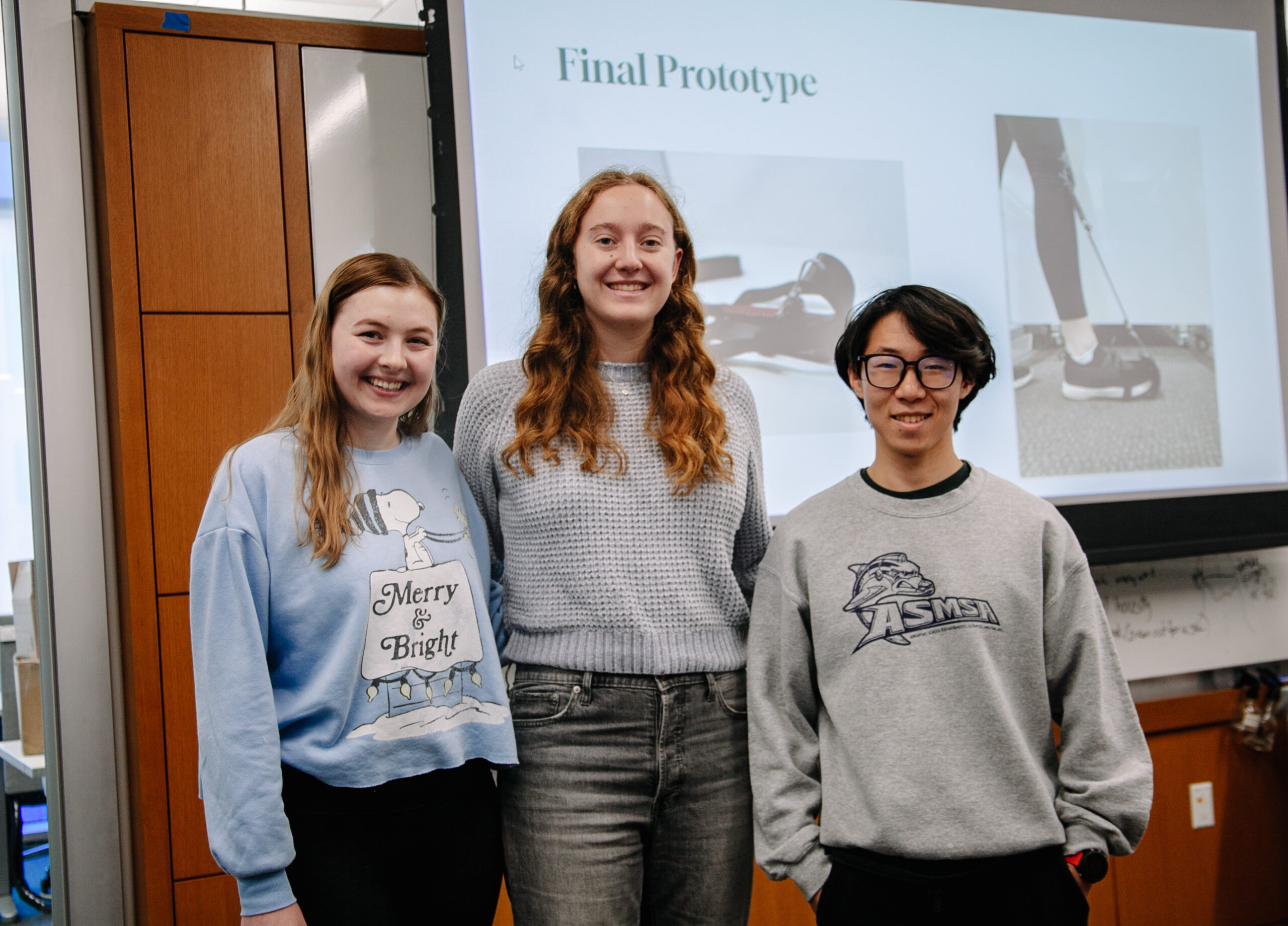
Three Vanderbilt students are making strides in the realm of physical therapy by designing a therapeutic tool aimed at assisting physical therapists in their work with individuals with Drop Foot, which is a general term for those who have difficulty lifting the front part of their foot.
Included as part of Professor Kevin Galloway's course "How to Make Almost Anything and Make it Matter," the project brought together Eliza Hill (third-year, Chemical Engineering), Elizabeth Walther (second-year, Mechanical Engineering), and David Huang (second-year, Computer Science and Math). Their client, Kate Lewis, a Rehabilitation Specialist at Pi Beta Phi Rehabilitation Institute, was seeking a way to allow patients with Drop Foot to safely walk in a clinical setting because current methods were either not durable or too time consuming to put on.
"This project showcases the power of interdisciplinary collaboration and hands-on learning in tackling real-world challenges,” said Kevin Galloway, Director of Making at the Wond’ry and Research Associate Professor in Mechanical Engineering, Vanderbilt University. “It's inspiring to see students like Eliza, Elizabeth, and David leverage their diverse skill sets to create meaningful solutions that directly impact people's lives. Projects like this not only enrich the educational experience but also contribute to the greater good by addressing neglected challenges and promoting inclusivity."

The project idea was also spearheaded by Eliza Hill, who chose it to be a project for the Tikkun Olam Makers (TOM) Makeathon, an annual event that pairs teams of Makers with Need-Knowers to build affordable solutions to neglected challenges of people living with disabilities. This allowed her team to test multiple prototypes over the semester, and come up with the best possible solution for their client.
For Eliza, who has always wanted to make a lasting difference in people’s lives, opportunities like TOM and Kevin’s class are making a formative impact on her time at Vanderbilt. “I often felt like it takes so long to get to a point in your career where you're really making a difference in someone's life,” she said. “But I found people who were actually doing that in college right now, which felt so cool. I want to be as involved as I possibly can throughout my college experience.”
Throughout the design journey, the team collaborated closely with two physical therapists, whose feedback helped shape the final design. This included incorporating an elastic band component and a sled-like structure, allowing for easy attachment and detachment as needed. The team's progress was showcased through multiple presentations, demonstrating the product's evolution from concept to completion.
This project exemplifies Vanderbilt University's commitment to blending technical innovation with societal impact. It highlights how diverse teams can collaborate to create solutions that enhance therapy sessions and promote independence for individuals with disabilities. Eliza plans to continue further refinement of the prototype for their client, ensuring the tool continues to meet their needs and exploring further developments.